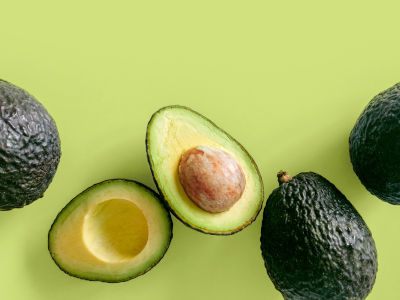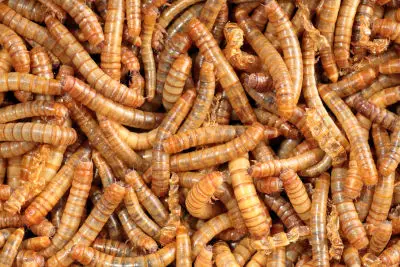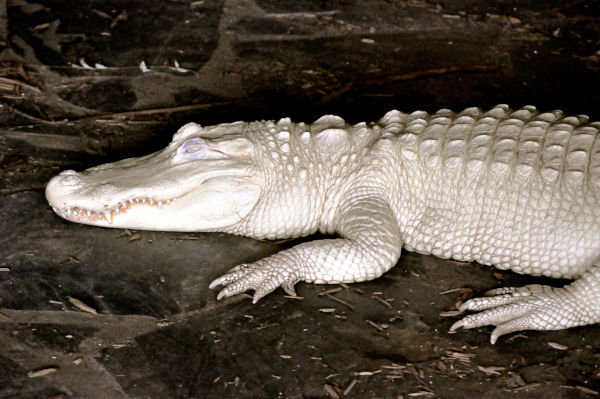What is an Albino Chameleon? (Do they even exist?)
Have you heard the myth about Albino Chameleons? But is it a myth or reality? Either way, the first priority is understanding how to care for Chameleons t the best of our ability (Click here for my best Chameleon guide, on Amazon). But, let me also satisfy your curiosity on these Albino Chameleons…
What is an Abino Chameleon? An Albino Chameleon is a chameleon which has a rare medical condition which affects its skin pigmentation. They appear to be pale (without any visible skin coloration). Albinoism is not limited to just chameleons, they can be seen in humans and many other animals.
| Are these foods dangerous for your Beardie? | |
| Avacado? Click here to learn, from this guide, if this food is dangerous |  |
| Superworms? Click here to learn, from this guide, if this food is dangerous |  |
Understand this, this condition not only affects their skin (or fur in other animals). It also affects their eyes (more on this later). I will now explain if they really exist, what problems they have, if they have shorter lifespans and much more. Keep reading…
Do Albino Chameleons even exist?
This is a good question. And, you know when people say this, it means they are not sure. According to this site they do. However, personally I have not seen any convincing evidence. Also, I haven’t personally seen one.
Which does lead to some doubt. However, Albinos are present in many different animal species (with obvious evidence), as well as humans. So logically speaking it is very possible, and very likely.
Do other albino animals exist?

Yes, as mentioned earlier, they exist have been seen across many different animal species, as well as humans (which I have seen with my own eyes).
According to this site, there are Kangeroos, frogs, snakes and even more. They also have images to prove their point.
What problems do albinos face?
Albino chameleons or any albino for that matter have a number of potential medical issues to deal with. For that reason, in this section, I’m going to list and explain some of them. Some of these issues are more obvious than others.
Vision problems.
Some albinos have problems with their vision. This is linked to abnormal development in their Iris. And also linked to the lack of pigment development in their Iris.
In some extreme cases, there can be abnormal nerve connections in their eyes, which cause severe vision problems.
Eye color issues.
This is more of a subtle problem and arguably, more of a cosmetic issue at that. Basically, they tend to have red eyes or odd eye color variations. Again, this is linked to the lack of pigmentation color in their eyes.
Issues with skin.
Due to their pale skin (or fur) and lack of melanin (more on this later), Albinos are susceptible to skin diseases, which are triggered by direct sunlight. In humans, albinos are susceptible to sun-related diseases such as skin cancer.
Animal Fur color.
Other animals, such as Albino cats, will have light-colored fur. In extreme cases, they may have white fur. For humans, there is also a condition called “Forelock” which affects their hair. In particular, the hair near their forehead.
Social issues.
One of the biggest problems that albino animals face, as well as humans, is social problems.
There are obvious differences between them when compared to their families and friends. Therefore they stick out like a sore thumb and are often singled out. Usually not ending well, such as animals getting attacked or humans being bullied.
Is there such a thing as a partial albino chameleon?
If you read forums or search the web you may have heard people talk about partial albino chameleons.
However, there seems to be little to no real evidence of this. And, according to Wikipedia, the whole concept of a partial albino doesn’t make any sense.
The argument states that you are either an Albino or not. There is no in-between. And an interesting analogy has been drawn, which states you cannot be “half pregnant”, right?
What causes an Albino Chameleon (or animal) to have its appearance?
According to Wikipedia, the lack of melanin is typically caused by a gene called TYR. This governs and codes the development of melanin. It if it is damaged in any way it can cause issues with the development of melanin, which is required for the pigment coloration.
Do albinos have shorter lifespans?
Not necessarily. Albinos can live a long and normal life. However, there are other factors that can affect this, such as their environment.
For example, as discussed earlier, albinos do not have good sun protection, due to the lack of melanin in their skin.
And, unfortunately, no amount of sun cream can really help with this (for humans anyway). Therefore, if an Albino lives in a tropical environment. And they are not careful to protect their skin, they could be more susceptible to skin diseases such as skin cancer.
Chances of Multiple Albino Chameleons
The chances of having multiple albinos is very very low. To quantify this, for humans, it’s likely to be one in 17,000 that may be Albino. This is similar in the animal and lizard world. Therefore, you can do the math, it is very unlikely to have more than one at the same time.
Related questions:
In this section, I will cover some related questions to Albino Chameleons.
What is melanin? This is the pigmentation, which has a dark or light brown color, which is responsible for the coloration in the skin, hair, and eyeballs.
When humans go on holiday and tan their skin. The tanning of the skin is caused by the melanin. Naturally darker people typically have more natural melanin than lighter-skinned individuals.
Why does the lack of melanin affect lizards or other animals? It affects them because melanin is usually responsible for protecting our skin against sunlight. One of the biggest concerns is a melanoma which is a form of skin cancer.
The lack of melanin in the skin of the human or an animal will mean that they are more susceptible to skin-related diseases.
Can Albino Chameleons change color? Some people have asked if chameleon albinos have the ability to change color. The answer is no. This is because they lack the ability to manipulate their skin color based on the fact that they are albinos.
As you know chameleons have a unique ability to change their color. However, unlike what you have been told, this ability to change color is not necessarily linked to matching their environment (Click here to see what a Chameleon’s color actually means.
What type of chameleon changes colors? The Panther (Click here to see how long a Panther Chameleons Lives) & Madagascar Chameleons are known to be very colorful. They have the ability to change into many colors. Typically you will expect to see green or brown colors with Chams, but they have the ability to change to some really bright and beautiful colors, such as yellow, pink, red and other great colors.
Do Jackson chameleons change colors? Yes. They definitely do change color. However, they are not known to be as colorful as others, such as the panther or Madagascar Chameleon. But, they still have the ability to change to colors such as yellow, blue and other colors.
Do Chameleons change color to match their environment? No, this is not true. It is a myth actually. It’s cool for TV programs and ads to play on this because it is easy to sell things. However, in reality, this is not the case. As stated in my article about Chameleon colors (Click here to read it now), I explain the true reason why this happens.
How fast can chameleons change color? They can change color in as little as 20 seconds. This may be a lot faster than you expected, but this is a natural, instinctive thing, that the Chameleon does not consciously do. its likes breathing oxygen, we just instinctively do it, are you with me?
How does a chameleon’s tongue fit in its mouth? It has strong tongue muscles that help its tongue expand and retract. Also, it has collagen that helps with the sprining action that you have probably seen or heard people talk about.